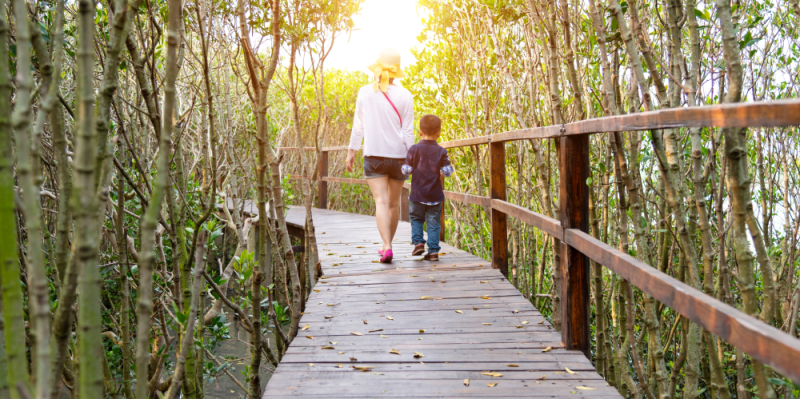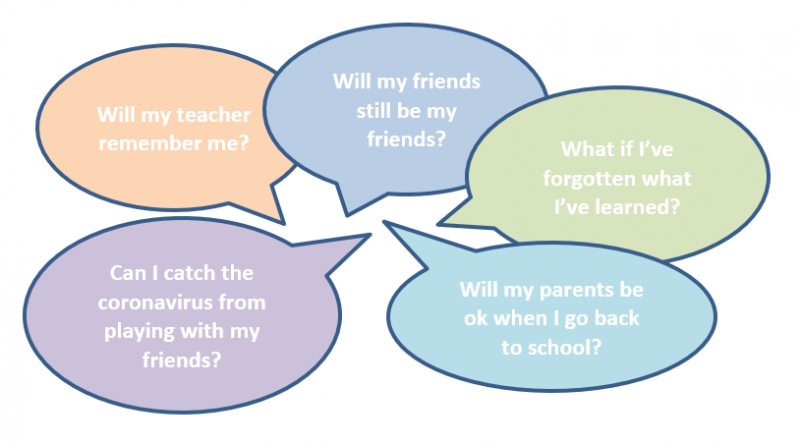Kelly Hannaghan shares her own experiences of the repair and reintegration process that schools are currently facing. Are educators and pupils ready for the changes ahead?

Who would have thought that the end of the academic year would feel like this? Pre-coronavirus school life would have looked very different, with the excitement of celebrations, sports days, school performances and ending processes for pupils that were excitedly moving onto the next chapters of their lives.
Now we find ourselves in a space where social distancing safety is a priority. It may seem an impossible task to hold a school community together and to promote positive relationships whilst the centre of our focus is to keep people at a safe distance to protect their health.
What is clear for schools is that while we are planning our recovery curriculums, we also need to think about the emotional impact the pandemic has had on our school communities. The wellbeing of our staff needs just as much thought as pupil mental health.
Supported school communities provide positive and safe relationships for vulnerable pupils; this will in turn heal minds, brains and bodies and help young people make sense of what has happened
Everyone will have their own personal experience of the coronavirus lockdown, and it’s important to respect the difference in these narratives. Some may have relished the extra time at home and found this to be a positive experience, whereas others may be desperate to get back to some sense of their own normal.
I believe the vital ingredients for a successful recovery program is to start from where people are. Here are some key indicators to think about.
‘When is the right time to send our children back to school?’ There is no one simple answer to alleviate the stress for parents in making that decision. As educators all we can do is provide clear information on what the schools environment will look like.
It would be naïve of any school leader to think that the young people will automatically feel safe and comforted when returning to schools. Equally naïve would be to expect pupils to pick up the curriculum at exactly the same point at which they left it on the day of school closures.
Too much has happened this this space of time. For a glimpse into the reality of where the minds of children and young people currently reside, here’s what some of our pupils are saying.

Communication is a vital tool to help settle anxious minds. Mapping out what the school day might look like for staff, pupils and their families will offer calm in what could be a chaotic experience.
Every week since lockdown I have written a wellbeing newsletter for both staff and parents; as well as creating a sense of belonging, these have ensured families feel remembered and considered.
What if as educators we could be fully aware and understanding of the needs coming through our schools gates post pandemic? How would growing a safe nurturing environment dilute the risk for children and young people?
The best place to start is to gain a deeper understanding of trauma and prepare to become a trauma informed school. Research tells us traumatic events like a pandemic can create waves of emotional distress and discomfort.
For example, a survey undertaken by the charity Young Minds (2000 young people with existing conditions) in March 2020 revealed that the coronavirus pandemic is having a profound effect on young people with existing mental health conditions. 83% of those who took part in the survey reported increased anxiety, problems with sleep, panic attacks or more frequent urges to self-harm.
The University of Oxford CO-SPACE study reported that one fifth of children do not now feel safe to leave their homes.
This is why a trauma informed school is needed more than ever – one that is able to support children and young people who suffer with trauma or mental health problems. It may be behavioural symptoms or a barrier to learning. Evidence shows that for children who have suffered painful life experiences, if help is not available, there is a very high chance of them continuing to suffer with poor mental and ill health.
If you place wellbeing and relationships at the heart it will have a positive effect on your whole school community
The challenge is that we need to stay physically distant whilst staying emotionally close – so important when we are trying to help our young people regulate their emotions. I believe that school leaders should be offering trauma informed training to prepare staff to respond to possible mental health needs.
Supported school communities provide positive and safe relationships for vulnerable pupils; this will in turn heal minds, brains and bodies and help young people make sense of what has happened. This is central to recovery.
Here are some simple tips to continue to provide a new way of connectiveness in education.

A quick and easy way to help assess the emotional temperature of your classrooms is to help the pupils begin to recognise and name their emotions. Using a simple ‘check in’ process ideally would be done at different points throughout the school day. This will empower pupils to reflect on how they are feeling.
 The blob tree images are a useful tool for this. Staff can ask questions such as:
The blob tree images are a useful tool for this. Staff can ask questions such as:
If pupils are having an emotional episode, staff could try using these prompts in response.
For more on this, see my article on teaching children about understanding and managing emotions.
Identifying and screening for risk factors is key for a managed phased return to schools. It’s also important to identify and build areas of strength and resilience of the pupils, families and staff for this transition to be successful.
However you are planning the return, be mindful that if you place wellbeing and relationships at the heart it will have a positive effect on your whole school community.